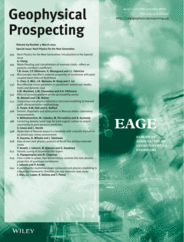
Full text loading...
 , Jorge L. Lopez2
, Jorge L. Lopez2 , Raquel Velloso3
, Raquel Velloso3 , Fabio Perosi4
, Fabio Perosi4
We develop a workflow to estimate elastic attributes ( and ) of Pre‐Salt carbonate reservoirs using the Xu and Payne rock physics model in a depth‐variant multimineralogic fashion and apply it to one calibration and four extrapolation wells in a field in the Brazilian Santos Basin. Some of the parameters were stochastically simulated in a Bayesian framework to handle the model non‐uniqueness. Nuclear magnetic resonance porosity and mineralogic logs and x‐ray powder diffraction data from the studied wells and literature reference values were used for elastic solid media and dual‐porosity network modelling, bringing geological reasoning to the proposed workflow. Using rock physics templates, we improved our understanding of the reservoir petroelastic trends and devised alternative model parameterizations. Since the model was parameterized in a multimineralogic fashion with depth‐variant mineralogic information (e.g. volumes of carbonate, quartz and clay) as input, we improved elastic attribute estimations within the reservoir, increasing the model predictive power, compared to the common practice of allowing only porosity to vary with depth and representing the matrix properties by a depth‐invariant homogeneous or mixed mineral. We also investigated the workflow robustness and non‐uniqueness by studying its dependence on the choice of calibration well.

Article metrics loading...

Full text loading...
References


Data & Media loading...

